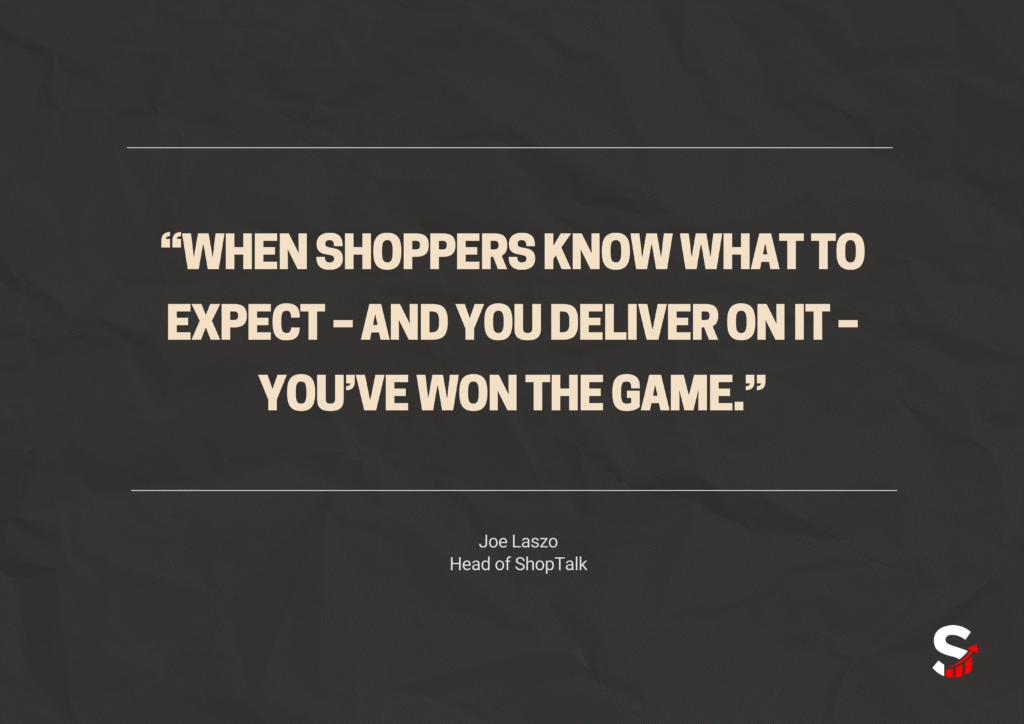
It’s 2025–if you’re a retailer and you’re not using a loyalty program, you’re one of the few. More than 90% of companies use some form of loyalty program. But that doesn’t mean any loyalty program is better than none. Don’t rush headfirst into choosing one just because you feel left out. Choosing the right loyalty program takes a lot of consideration.
The last thing you want is to invest time and resources into a program that doesn’t resonate with your customers or drive repeat purchases.
The truth is, the wrong loyalty program can not only waste your resources, but it can also alienate potential loyalty customers. So, how do you know which loyalty program structure will actually work for your retail business and help you stand out in a crowded market?
In this article, we’ll explore the best loyalty program structures for 2025, highlighting the key features of each one, and helping you make an informed decision that drives results.
Why Choosing the Right Loyalty Program Structure Matters in 2025
A digital first future
Artificial Intelligence is dramatically reshaping the retail sector. In 2025, AI is predicted to help retailers better understand consumer behavior, analyze past purchases, and interpret their signals. How?
The short answer is data. AI’s biggest benefit is its enormous amount of accurate data. Unfortunately, many retailers juggle fragmented data across different channels, making it difficult to train and optimize AI models. That’s why an omnichannel loyalty program is optimal to solve this issue, blending the physical and digital to store clean data seamlessly.
Spot-on data allows retailers to know what’s in customers’ shopping carts before they start shopping. But as more customer data becomes available to stores, there’s a whole can of worms circling ethical data use and safety issues that need to be carefully considered. Driving innovation and efficiency has to be balanced with maintaining consumer trust. With technology opening up easier access to customers’ needs, you need the ability to gather the right data, the right way.
Fast-moving competition
Competing with retailers in 2025 can be challenging. To stand out in a saturated market, you need a brand that people can recognize and rely on. Trust drives performance. With so many choices, customers would rather bet their money on stores that they can return to again and again for reliable goods and services.
To build trust, the solution is none other than loyalty programs. They allow better communication between retailers and customers, cultivating a mutually beneficial relationship. You need a loyalty program that fits with your preferred channel and brand message. Something that says plainly to your customers what you sell, how much it costs, and why they should buy it from you.

Changing consumer expectations
Even though 60% of shoppers start online, 53% of Gen-Z shoppers still prefer in-person purchases. This means that hybrid shopping should be the standard, an omnichannel experience that combines the best of both worlds.
To account for the incoming rebirth of physical retail stores in 2025, today’s physical shops must focus on providing a communal environment that can’t be replicated online, showcasing the unique identity of brands.
These spaces can cultivate loyalty around the store brand as consumers continuously seek meaningful, authentic connections beyond the digital world. And that human desire can be leveraged through loyalty programs that reward in-store visits.
Another trend is sustainability concerns being on the rise; 79% of young consumers are willing to pay more for eco-friendly packaging. Retailers can capitalize on this by marketing offers that leverage sustainable habits. With the right loyalty program, eco-friendly customers can be identified through previous behaviors and targeted for personalized offers.
Types of Retail Loyalty Program Structures
1. Point-based programs
There’s a reason why point-based programs are the most popular type that retailers use. It’s the simplest way for customers to redeem rewards. They accumulate points from making purchases, and then when a certain number of points add up, they can cash in for a free product or discount.
This type is easy to launch and quick to get the hang of. It’s straightforward to manage and ideal if you want a high purchase frequency. If you want more customization, some programs allow customers to earn points by completing specific actions, like purchasing in-store or leaving a Google Review.
Example of a point-based program:
2. Tiered programs
Tiers divide customers into usually 3 or more groups. The first one is the basic or free tier, where casual customers end up. The second is a silver tier for customers willing to spend more for better rewards. Last but not least, the top tier is for your most committed high spenders.
With tiers, you can segment customers based on their value. You get the benefit of higher spenders without alienating casual visitors by forcing them to pay more than they want to. Plus, customers who have reached a high tier will be less likely to switch to a competitor. Meaning more retention for you!
Example of a tiered program:
3. Paid or premium programs
Like subscriptions, customers pay a membership fee in exchange for exclusive rewards. In 2020, 62% of customers who subscribed to a paid loyalty program had a higher chance of spending more than those in a free plan. This is likely because people who have already spent money on something don’t want it to go to waste, so they’re more engaged in seeking perks through purchases.
The catch is, you have to offer a better value for money than on free plans. The more you charge customers, the better the rewards you have to offer them. Or else they’ll quit subscribing and switch to a different store that values them more. If you’re just starting out and unable to afford giving away high-quality rewards, remember to keep the membership fee low, or better yet, start out free and offer a paid plan once your store grows.
4. Coalition or partnership programs
When your store is located in a mall with other businesses, you have an opportunity to collaborate with partners, cross-promoting, and exchanging customers. This is a good way to grow your customer base with a new section of customers you couldn’t have reached otherwise.
The problem is that you need to find a partner that supports the product you’re selling. Finding that middle ground and synergy with another brand can be difficult. If you’re a small business starting out, it may even be harder unless you have another new store willing to share rewards. But if you get lucky, you’d have access to a larger variety of benefits to offer loyal customers, coming from both you and your partner’s store.
5. Referral-based programs
Recommendations are natural advertisements. That’s why your best bet for reliable marketers is your own customers. This type of program allows you to reward customers who spread the good word about your brand.
Whether you like it or not, customers will talk about your product anyway to the people they’re close with. So why not reward them for it? Besides, 77% of customers are most persuaded by product advice from family and friends. This way, you’ll get a deeper connection with customers who advocate for your brand, and better credibility that attracts new customers, all at once.
6. Hybrid programs
What do you get when you add tiers to a point-based program with a sprinkle of referrals for good measure? Well, that’s a hybrid program for you! It’s an all-in-one structure that combines all the perks of other loyalty program types that you want. But be warned, the extra features come with all the extra costs too.
If you want to appeal to different customer segments, provide multiple paths to engagement, and you’re able to afford the extra hassle, a hybrid program is the way to go. If you’re just starting out, it’s wise to start small. Begin with a simple points-based program, and then you can add more complex features later on, slowly balancing and optimizing your loyalty program for maximum effect.
For example, SimpleLoyalty contributed to the success of a fashion retailer by merging the lucrative tiered program with SMS marketing and limited-time promos. Here, the incentive for customers to spend more and reach the highest tier is that gold members get a 10% lifetime discount on all products. So customers will keep purchasing to earn 2000 points and be eligible for gold membership, and then once they’ve got it, they’ll keep spending to make use of their exclusive discount.
Example of a hybrid program:
| Loyalty program type | Pros | Cons |
| Point-based programs | – Easy to implement for beginners – Collects data about customers’ buying habits | – Can be boring without gamified elements – The larger your customer base, the harder it is to manage without automation |
| Tiered programs | – Naturally encourages customers to spend more for higher rewards – Gamifies the process of earning points, increasing engagement – Separates customer value through tiers that allow targeting for maximum profit | – Tricky to balance each tier and reward fairly – Requires extra resources like CRM integration to maintain engagement with different customer tiers |
| Paid or premium programs | – Gives a feeling of exclusivity – Adds revenue from upfront costs | – Unrecommended for small starting businesses, as it needs to build on an existing relationship – Casual customers can be put off by the price tag – Customer expectations are higher due to cost, requiring more consistent quality offers |
| Coalition or partnership programs | – Brings in more traffic through partners’ existing customers – Builds cross-brand journeys that grow your marketing reach – Increases reputation through brand association | – Requires external, like-minded partnerships – Difficult to manage rewards equally for both brands |
| Referral-based programs | – Higher credibility and customer trust – Minimize the cost of acquisition | – Requires trusted customers to be brand advocates – Success depends on how well you manage your store brand and the reliability of customers |
| Hybrid programs | – Able to foster a unique loyalty experience that aligns with your specific store – Attracts a wider audience, from casual customers to higher spenders | – Higher costs – Resource-intensive to operate – More complex training and onboarding |
How do you choose the right loyalty program?
Maybe you’re a small business that’s never used a loyalty program before, well then you should start simple (yet, effective) with a points-based program. Maybe you’re a store located in the middle of a bustling shopping mall, then a coalition program could help you. Or, if you’re a well-known retailer with a shrinking customer base, then a hybrid type is one worth trying.
Despite the different types of loyalty program structures, three core principles are behind every successful loyalty program.
The three R’s of loyalty programs are:
1. Rewards
Make sure your loyalty program can offer the right incentives for customers. Cashbacks are one of the biggest drivers of loyalty programs. 79% of consumers are more likely to purchase from a brand because of loyalty programs and their available rewards.
A common challenge is keeping a straightforward, easy-to-understand program. Customers sign up for rewards, so if you want to collect data for targeted marketing, you can’t have intrusive surveys that disrupt customers’ enjoyment. A loyalty program has to find the sweet spot of keeping customers happy and your store profitable.
2. Relevance
Different offers attract different customers. The right loyalty program needs to be able to tailor relevant messages that reach your target audience at the right time. Especially when your customers’ attention is divided between different channels. The average customer is involved in 14 loyalty programs, but is only engaged with 7.
To grab customer attention, you need your loyalty program to be customer-centric, able to leverage customer data in meaningful ways. Only being transactional isn’t enough anymore; customers need more. Their expectations are growing, and your loyalty program should be able to keep up with them.
3. Recognition
Customers who feel appreciated are more likely to spend more at your store. This means that you need a loyalty program that allows personalized communication and automation that supports a large customer base.
Customers don’t want to be just a number. They want an emotional connection with your brand. They want you to know what they like, want, and need. If you’re able to satisfy their desire through better deals that align with their identity, they won’t be able to help but share their passion for your products with other people.
Any loyalty program can give rewards to customers. What you need is a loyalty program that not only engages customers, but recognizes them, and inspires them to attract new like-minded customers.
Best Practices For Choosing The Right Loyalty Program
- Define your business goals
Before deciding which type of loyalty program is compatible with your business, you need to define what it is your retail store aims to accomplish. Is it more offline shoppers? Is it higher-value customers? Is it reducing churn? Are you having trouble making customers come back for a second time or more?
Being clear with your plan will allow you to better choose the right loyalty program and effectively convert one-time customers into loyal shoppers. When you know what you want to get out of the loyalty program, you can easily determine if it delivers or if you should try a different type and strategy.
- Understand your customer base
Is redeeming rewards automated or easy to initiate? Your staff can get training on how to manage your loyalty program, but your customers don’t get the same hands-on tutorial. So they need to be able to use it intuitively.
Are your customers capable of sustaining high-volume purchases? If your customers are mainly high-frequency visitors with low spending power, then your program should reflect that, or if you want to attract new customers, be careful not to alienate the old segment.
Always keep customers at the back of your mind. They’re the source of your success and failure. When choosing the right loyalty program, focus on what makes customers have a richer experience, and they’ll make you richer in return.
- Evaluate each type of loyalty program structure
Now that you’ve got the general idea of the different types of loyalty program structures and what they can do, you can weigh their pros and cons to figure out which one is essential to your business.
Look for the value that each structure brings to the table. Don’t judge the program only by what it offers or how much it costs, but by what it can offer your business specifically. Think about longevity like customer support and integrations. Take your time to assess which loyalty program structure is right for you in the state that your business is in right now and in the near future.
- Consider the structure’s flexibility
You don’t want your store to be static. Ideally, your store in a year’s time will have a larger customer base than the one you have now. So you don’t want your loyalty program to limit that growth. Once your program’s launched, customer enthusiasm can fade over time, meaning you have to be always on your toes and ready to innovate.
You need scalability in a loyalty program. Something that can allow you to reel in a different customer segment or handle an expanding amount of data. Your loyalty program is competing with neighboring stores, so if your store’s grown but the loyalty program stays the same, then maybe it’s time for a change.
- Budget your rewards
Running a loyalty program isn’t free. You need to be aware of the costs in giving away free products or discounts as rewards. Pay attention to your bookkeeping and consider how much you’re willing to spend on rewarding customers. Make sure that your rewards aren’t only valuable but also sustainable within your profit margins.
The key point isn’t to look at how much the program costs, but its ROI or Return On Investment. If it costs $500 a month but only brings in $2,000 in extra revenue, it’s not as worthwhile as a $150 program that brings in $1,500. Start small with a simple point-based program. You can experiment with more expensive features and higher-end rewards once you’re confident with your cash flow and ability to guarantee profitability.
Takeaway
With the growing retail landscape, you can’t afford to lose out on the benefits that come from loyalty programs. But deciding which type is right for you can be difficult. You don’t want to overextend your budget for a loyalty program that has too much, without first knowing what you’re using its features for. Customers in 2025 expect more from retail stores, so when choosing a loyalty program structure, you need to always keep them in mind.
Try out SimpleLoyalty for FREE and reap the rewards of our robust loyalty program! Utilize well-tested features that put customers first, and you’ll see a boost in profit.

